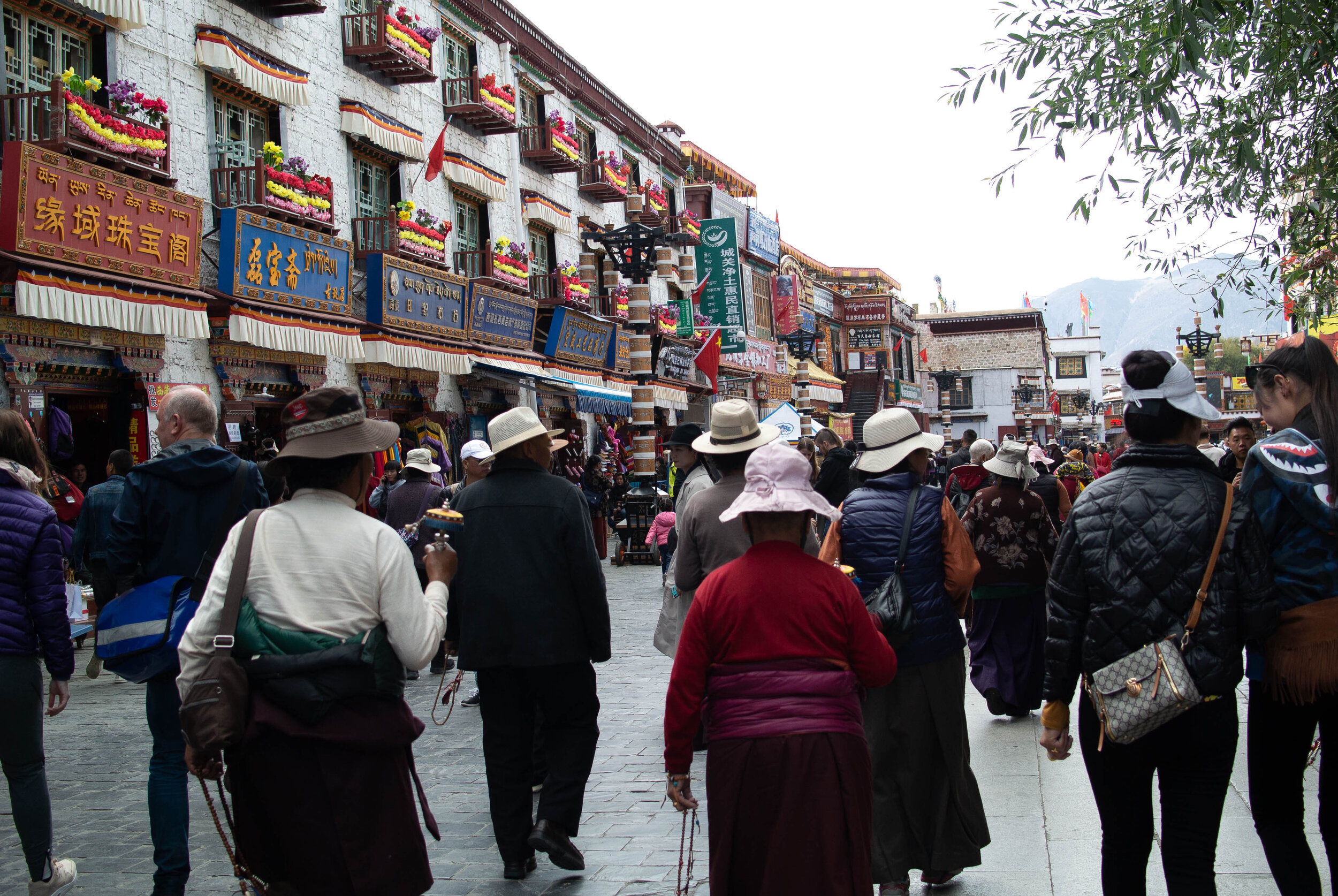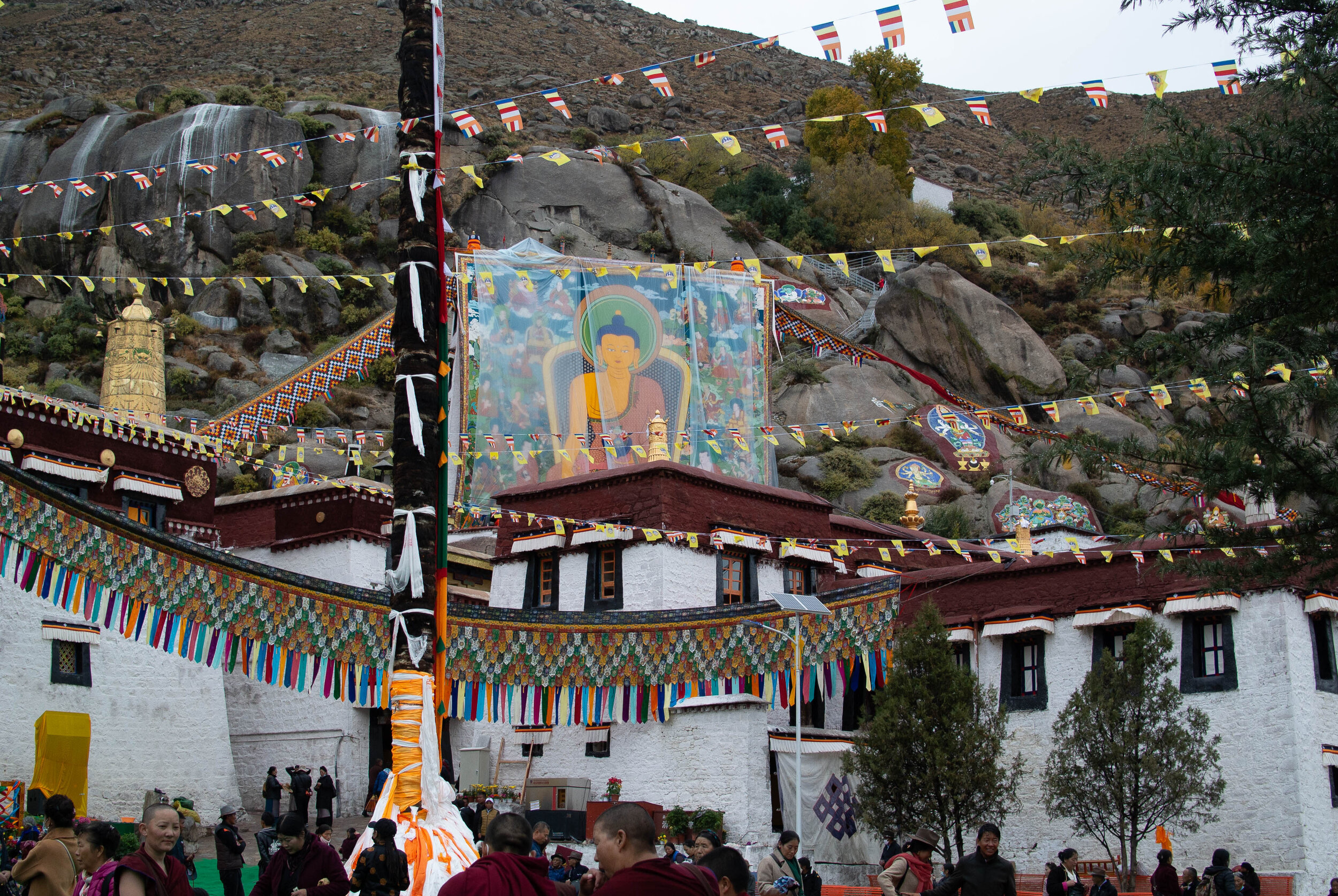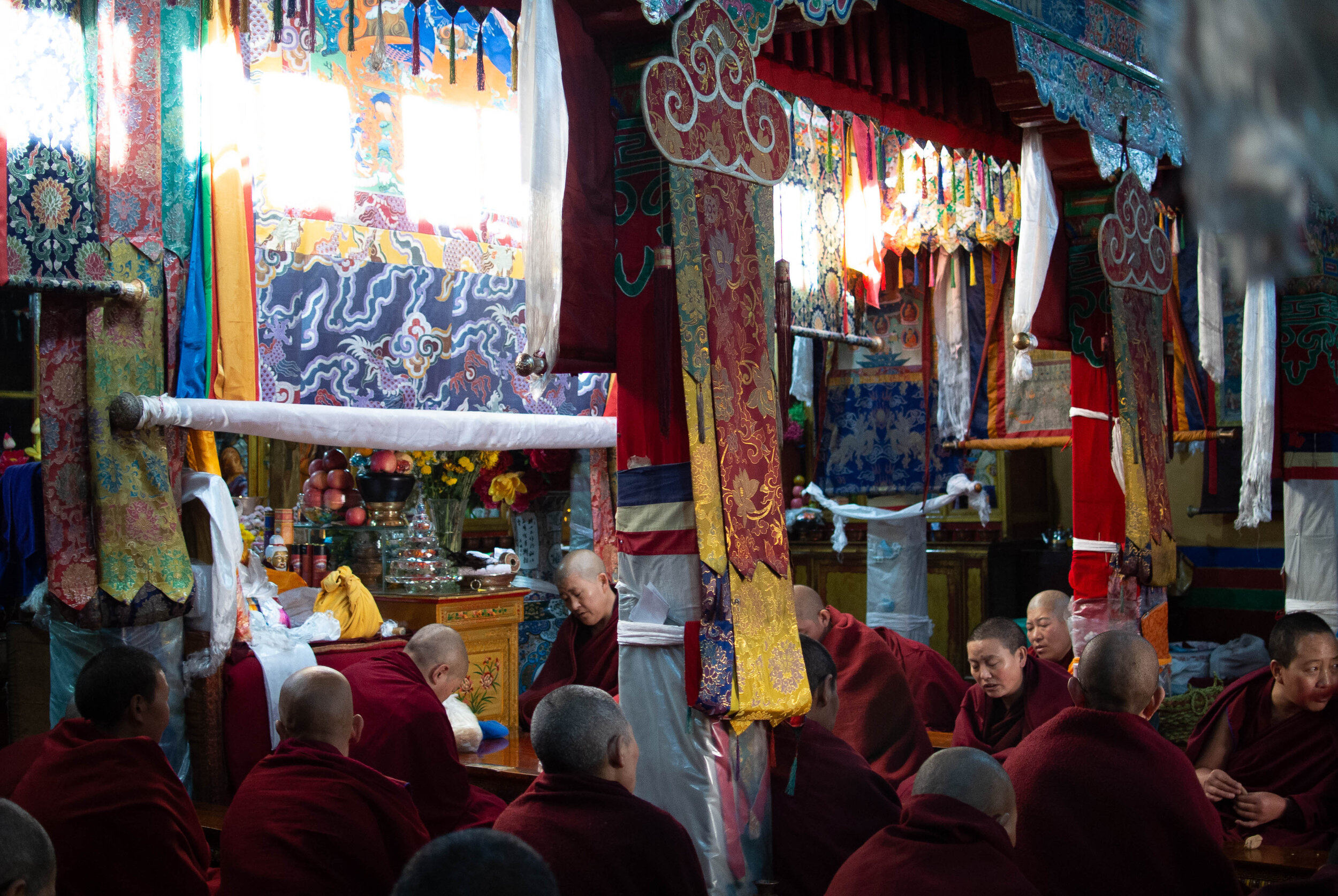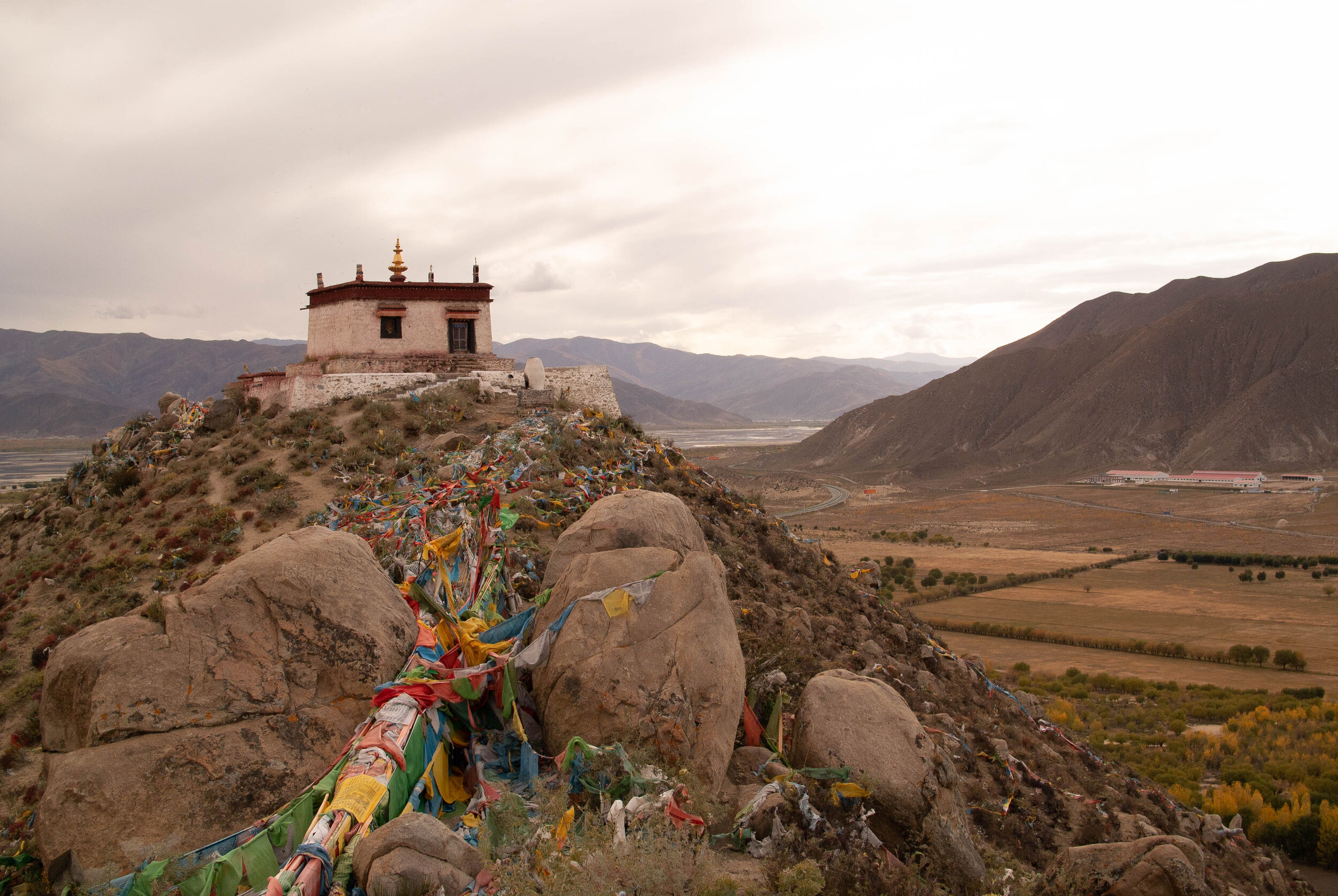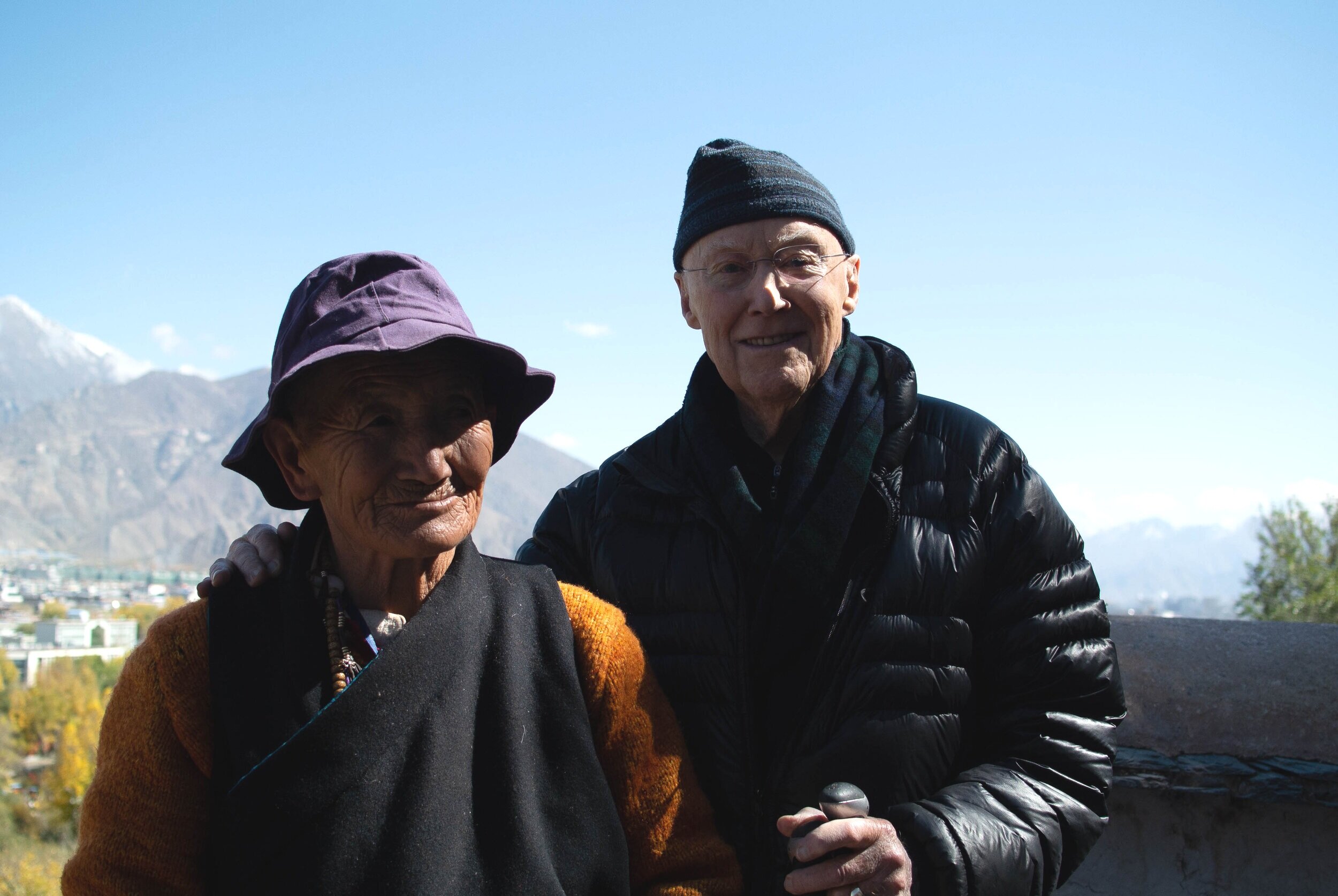Sitting at the window in the loft above my studio I look over the pond. The reflections of the trees show only the slightest rippling. As if on cue, two geese quack through the air and splash-land. What are they communicating at this time of world crisis?
The poet Rilke wrote:
I live my life in widening circles
that reach out across the world.
I may not complete this last one
but I will give myself to it.
Their bobbing beaks pierce the flat surface of the water creating a pattern of two interlocking circles. As these two rings expand outwards, their individual rings dissolve and form one large circle, then another, each one widening into more circles. The geese have become a great concentric ring-making machine, the vibrations extend almost across the pond. Copernicus would have been charmed by this binary sun. I think of all the human beings on the planet, how we haven’t seen the rings of our interconnectivity and interdependence quite this graphically before the pandemic spread. Can we deeply know that everything we do has repercussions that extend far out into the world? Will we remember this lesson?
I am taking a breather. I enjoy this opportunity to focus my attention on the geese, and not on the airspace around us. I have only been watching for a few minutes; they will glide and bob hour after hour, day after day, week after week, month after month. I don’t live within this kind of repetition; I seek what’s new. Something to assert, or is it insert my presence into the world? I always have plans, projects, things to do.
The geese begin swimming towards shore. One goose approaches and looks back, its mate is not following, so it turns back. I lose track of them and then espy them floating in the reeds along the edge of the pond. They occupy their own world in the cold water, churning out circles as they bob down and up with precision.
I consider how the geese are oblivious to the virus. They don’t know that my daughter and her boyfriend have moved in with us or that we are isolating ourselves physically from the rest of the world. They don’t know the longer I watch them, the closer I feel towards them.
Two Geese on the Pond
I’ve lost track of the geese, where did they go? Meanwhile, raindrops fall from overhanging branches into the pond making their own gentle circles.
Then I see one goose chase its mate out to the center of the pond, its neck hammering forward with surprising violence. Is it propelling its mate to swim faster or propelling itself with this motion? The geese are responding to a competitor who has entered their airspace. The intruder kept flying, and my two friends are quiet again, tucked near shore, bobbing for food. A green noodle of pond weed hangs from one of their beaks. The other has its back to me and I watch its webbed feet vigorously paddling to keep its backside lifted with its head and neck submerged. Is it seeking something more delicious, or more difficult to pull up, or something deeper? The tipping point is so hard to maintain.
Even in the midst of social distancing, let’s keep our circles widening. There are so many people who will need help financially, emotionally, spiritually, and physically. Toss pebbles into the pond, send prayers, call your friends, let love ripple the world.
I watch a little longer. I begin to feel like I know which is male and which is female. It’s quite silly, why would I even think that? One goose seems quieter, more delicate, and maybe a little smaller. But, of course, that’s all wrong, my personal bias. There are many species where the female is larger than the male.
Compassion increases the more attention we give something. Isn’t that the way the world works? In this time of social isolation, we need to be in touch, send out our love, and share what others are experiencing.
I have recommitted to posting a blog on Sundays as a way for us to stay connected. It may not be polished prose, but I will try to offer some small distraction from the numbers and charts. I send my love to all of you, each of you facing your own challenges, each of you dear to me.
The second and last stanza of Rilke’s poem is :
I circle around God, around the primordial tower.
I’ve been circling for thousands of years
and I still don’t know: am I a falcon,
a storm, or a great song?
A storm is raging, let’s be the great song, bow our heads, and let the ripples echo across the planet.
We Are Connected, LH, 2020, wax.






